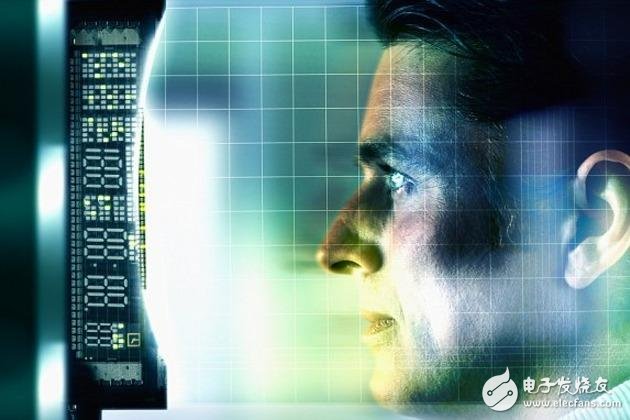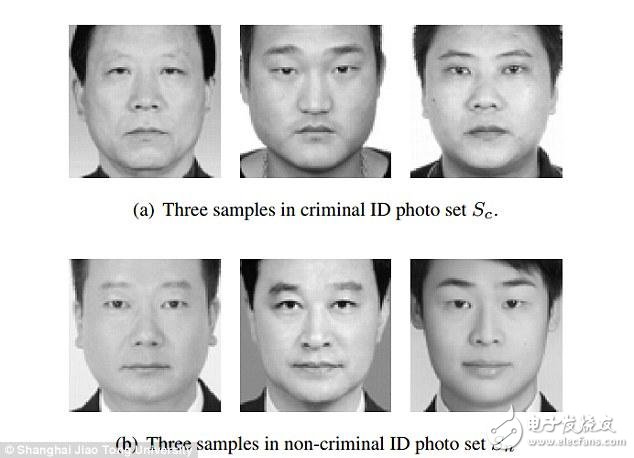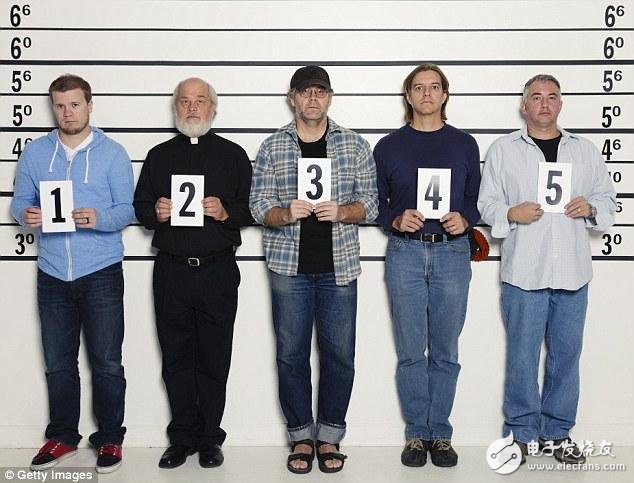There is an idiom called "thief eyebrows" that describes those faces that don't look like good people. This argument has been validated in the field of artificial intelligence.
Chinese scientists have done a study using artificial intelligence to judge the connection between human appearance and crime. By collecting facial features of Chinese citizens aged 18-55 and analyzing the data, artificial intelligence has obtained a set of conclusions about the characteristics of criminals:
Those who have small mouths, slightly upturned lips, and relatively close distance between the eyes, are more likely to be criminals than others with other characteristics.
However, this technology has been strongly criticized and accused by some opponents because they believe that this technology is only a basic research, and this research is biased, if this technology is applied to reality In the world, it would be ridiculous to come to the certification of criminals, because this technology is very likely to misidentify criminals, let good people get rid of, and let real criminals go unpunished.


As the saying goes: "People can't look at each other, the sea can't fight." It's ridiculous to just give him a criminal or a liar's hat by virtue of a person's appearance, but the current artificial intelligence technology is doing this. Ridiculous things.
The paper has been published on foreign websites. The main content of the article is whether the investigation can be based on the latest artificial intelligence technology. By identifying and analyzing the characteristics of the human face, it is judged whether a person is a criminal.
Although the research is still in the laboratory stage and is not widely used, regardless of the outcome, it is not for those with facial features, slightly upturned lips and relatively close eyes. A good news, because once a person has such a facial feature, it is likely to be considered a criminal or a liar in the future.
Researchers Wu Xiaolin and Zhang Xi of Shanghai Jiaotong University conducted extensive and in-depth research and discussion on this artificial intelligence technology. They published their research results in "arXiv", but their research papers have not been officially approved or officially published, but resources can be found online, which is a priority publication.
According to their previous research, Wu Xiaolin and Zhang Xi pointed out that judging whether a person is a criminal or not can mainly be judged based on three basic facial features.
These three characteristics include: the degree of curvature of the lips; the size of the distance between the two eyes; the size of the angle between the tip of the nose and the corner of the mouth (which can be considered as the size of the mouth).
At the same time, according to the computer's complicated calculations, it can be concluded that those who have small mouths, small eye spacing, and slightly curved facial features are more likely to be a criminal or a liar.
The researchers also wrote in the article: "Unlike human prosecutors or judges, the rules of visual algorithms or classification of artificial intelligence computers often do not have any subjective factors, and all judgments are based on the data collected. Because the computer does not have subjective emotions when making judgments, nor does it generate any prejudice based on its past experiences or even race, religion, politics, ideas, gender, age, etc. Negative emotions caused by poor sleep or unpleasant meals affect their judgment. Therefore, artificial intelligence computers are more objective and reliable than human prosecutors or judges."

The study collected photographs of 1,856 Chinese citizens between the ages of 18 and 55, and deliberately selected these collected citizen photographs to maintain the reliability of the sample because of the 1,856 collected Chinese citizens. There are different races, different genders, different ages and even different facial expressions, which can increase the reliability of the sample.
Of the 1,856 Chinese citizens collected, 730 were criminals. Of course, in order to ensure the accuracy of the data, the 730 criminals did not include criminal suspects, including only those who have been identified as criminals.
The photos of these collected Chinese citizens are all input into the computer for statistics. The computer uses the four algorithms to accurately analyze the characteristics of the citizen's face in these photos, and infers the common face of the criminal based on the results of the analysis. feature.
The researchers also wrote in the article: "Although the beginning of this research project is full of historical controversy, the four algorithms of the computer are running very well and provide very effective in infering criminals. evidence."
The researchers said: "Although at the moment, we have obtained very effective evidence to infer criminals, such as smaller mouths, slightly curved lips, closer eye spacing, etc., but not all people Believing and supporting this research, in fact, most people are skeptical and strongly opposed to our research."
A netizen said: "I am very shocked by the publication of this technology. The results of this study are shocking. I think these studies are very unscientific. This should be a counterexample to the scientific community. University professors. Students should be actively advised in the classroom not to do so."

Some users said: "There is no scientific basis for such research, because the slight smile of the criminal will affect the size of the mouth and the shape of the lips. These effects are likely to be criminals. When shooting photos, the photographer's shooting angle or sexual inertia requirements are generated, and the facial features common to the so-called criminals are likely to be due to the same police department, using the same photographer or the photos taken from the same group. The result is not very good correlation. Therefore, the research results naturally have no scientific basis and reliability."
Now, the biggest concern about this artificial intelligence technology is that computers are likely to prove an innocent person to be a criminal in real-world courts based on their so-called "evidence." These artificial intelligence techniques are very likely to make some wrong judgments, because it is very likely to identify a person who has not committed a crime as a criminal, and at the same time, it is also possible to identify a criminal who is not guilty and thus released.
This is not the first time that artificial intelligence technology has been criticized and accused by the public.
In a beauty pageant called Beauty.AI in September this year, an artificial intelligence computer collected self-portrait photos from the ages of 18-69 around the world and judged them. When the results were announced, there seemed to be some accidents, because the robots “do not like†the black-skinned people, so all the photos of the black skin were screened off, and the robot had some prejudice against the dark-skinned people, which caused the society. Wide dissatisfaction.
Although most of the contestants were white-skinned, most of the dark-skinned people in India and Africa submitted photos, all of which were screened out. Probably because most of the contestants are white, the artificial intelligence algorithm defaults to white-skinned people, which leads to the blackout of the photos.
Alex Zhavoronkov, chief scientific officer of the Beauty.AI beauty contest, said: "If you don't have enough data for different skin tones in the database you collect, then artificial intelligence computer robots will produce biased results."
So, if you want to use an algorithm to identify a set of data, if there is not enough data of a certain type, it may produce a biased result.
Steel poles are commonly used to carry several types of electric power lines, distribution lines and lighting system. Distribution lines carry power from local substations to customers. They generally carry voltages from 4.6 to 33kV for distances up to 30 miles, and include transformers to step the voltage down from the primary voltage to the lower secondary voltage used by the customer. A service drop carries this lower voltage to the customer's premises.
Telecommunication Mast, Telecommunication Antenna Mast,Telescopic Telecommunication Mast,Signal Telecommunication Mast
Yixing Steel Pole International Trading Co., Ltd , https://www.yx-steelpole.com